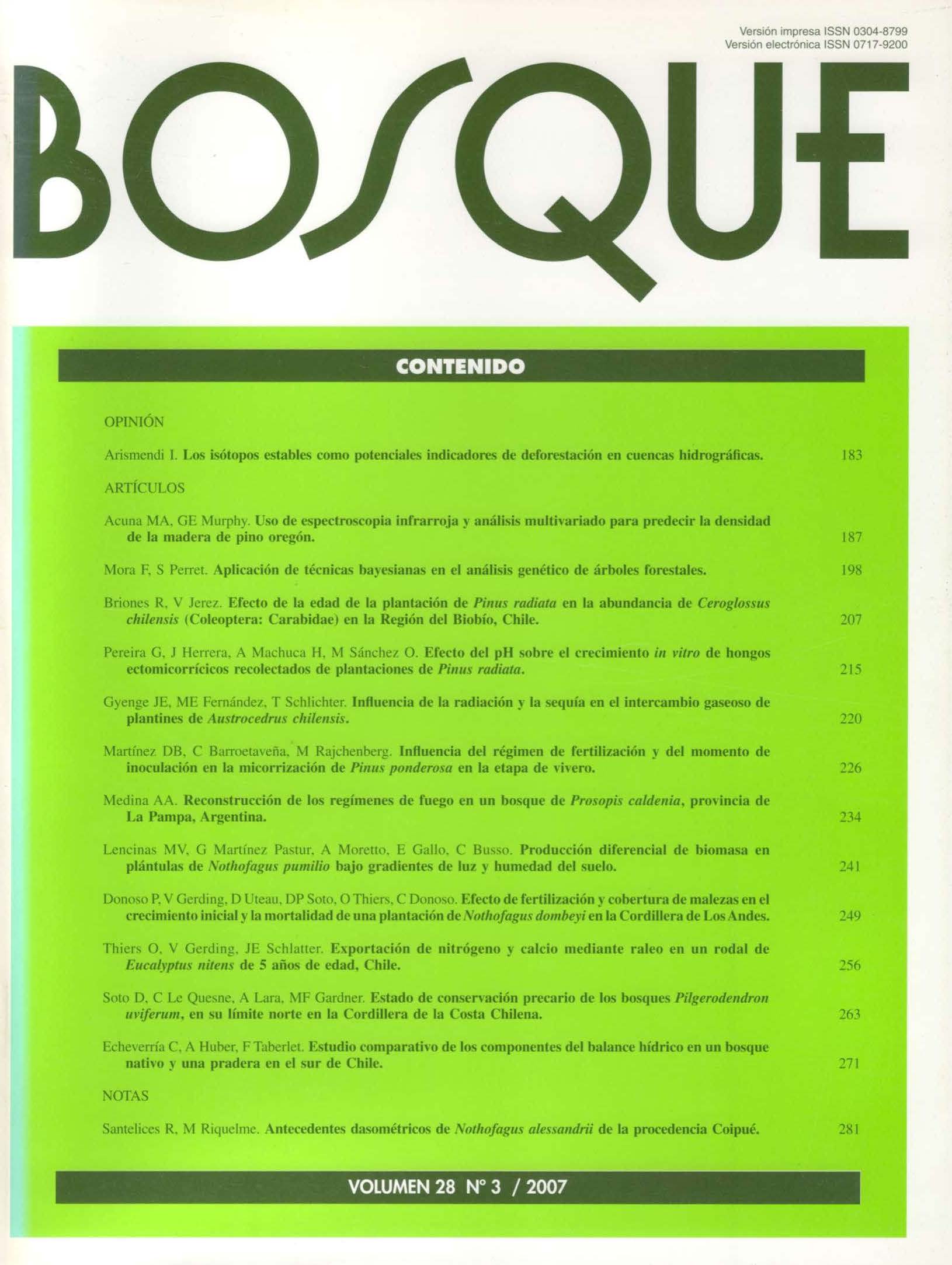Use of near infrared spectroscopy and multivariate analysis to predict wood density of Douglas fir
Main Article Content
Abstract
In many parts of the world log markets are becoming increasingly competitive and complex. Wood properties, such as stiffness, density, spiral grain, and extractives content, are now being considered by log buyers. Assessing these properties in real-time will be a challenge for log supply managers. The utility of near infrared (NIR) technology for predicting wood density in Douglas fir (Pseudotsuga menziesii) stems was examined. Wood disks were collected from 17 sites around Oregon, USA. Each disk was cut with a chain saw, of similar gauge to that used on mechanized harvesters/processors, to provide saw chips. Near infrared spectra were then obtained for the chip samples. Multivariate techniques were used to correlate wood properties with the NIR spectra. The preliminary research results showed that NIR could be used to predict density. Coefficients of determination ranged between 0.80 and 0.96 for calibration models, and between 0.56 and 0.85 for validation models. These results indicate that NIR technology could be used by mechanized harvesting equipment (e.g. harvesters) for log segregation based on wood density.

